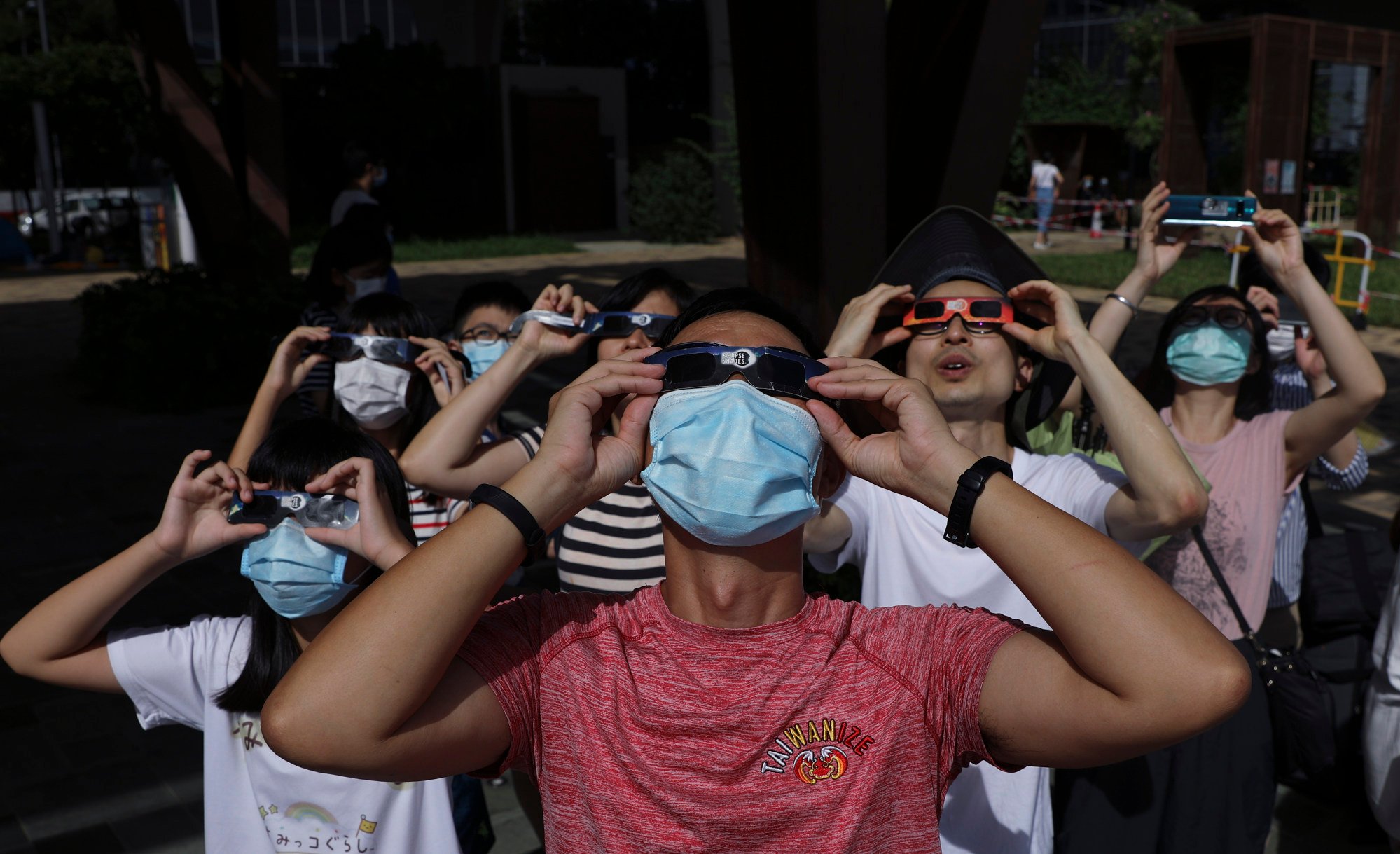
Rare partial solar eclipse to grace Hong Kong’s skies next Thursday for first time in 3 years
- Celestial event to occur between 12.34pm and 1.16pm next Thursday, city’s weather forecaster says
- Eclipse’s magnitude and duration to be slightly larger and longer in city’s southeastern region, according to Hong Kong Space Museum
Hongkongers will be able to catch a glimpse of a rare partial solar eclipse next Thursday, the weather forecaster has said, marking the first sighting in almost three years in the city.
The Hong Kong Observatory on Thursday said the eclipse would occur between 12.34pm and 1.16pm on April 20, with it reaching its maximum magnitude at 12.55pm.
According to David Hui Tai-wai, scientific officer at the Observatory, the last time the celestial event graced Hong Kong’s skies was almost three years ago in June 2020.

Although solar eclipses occurred at least twice a year, the regions where they could be observed varied each time, he added.
“It’s rare that it can be spotted in the same region repeatedly [within a year]. For Hong Kong, we normally see it every two years,” he said.
A solar eclipse occurs when the moon passes between the Earth and the sun, obstructing the face of the sun. A partial eclipse forms when the sun, moon and Earth are not perfectly lined up and only part of the sun appears to be covered by the moon, creating a crescent shape.
But the eclipse will only have a magnitude of 0.028 this time, meaning just 2.8 per cent of the sun will be blocked by the moon during the maximum phase.
The weather forecaster said areas with no obstructed views would be good for viewing the eclipse as the sun’s elevation would be quite high during the celestial event.
According to the Hong Kong Space Museum, the eclipse’s magnitude and duration will be slightly larger and longer in the city’s southeastern region. It suggested viewing it in Kowloon East or the eastern part of Hong Kong Island.
But Hui said the weather might make the eclipse difficult to spot.
“We may need some luck that day as based on the weather forecast, we estimate it will be quite cloudy with a few showers,” he noted.
He warned people not to look directly at the sun with the naked eye or through a telescope to prevent severe damage to their sight.
People could also watch the museum’s live broadcast on its YouTube channel, he added.
The celestial event will be a hybrid eclipse, meaning that on top of what Hongkongers will see, a total solar eclipse or annular solar eclipse can also be observed in other parts of the world.
A total solar eclipse occurs when the moon fully blocks the face of the sun, while an annular solar eclipse happens when the moon appears smaller than the sun and does not completely cover it. This creates a bright ring of light around the moon.

